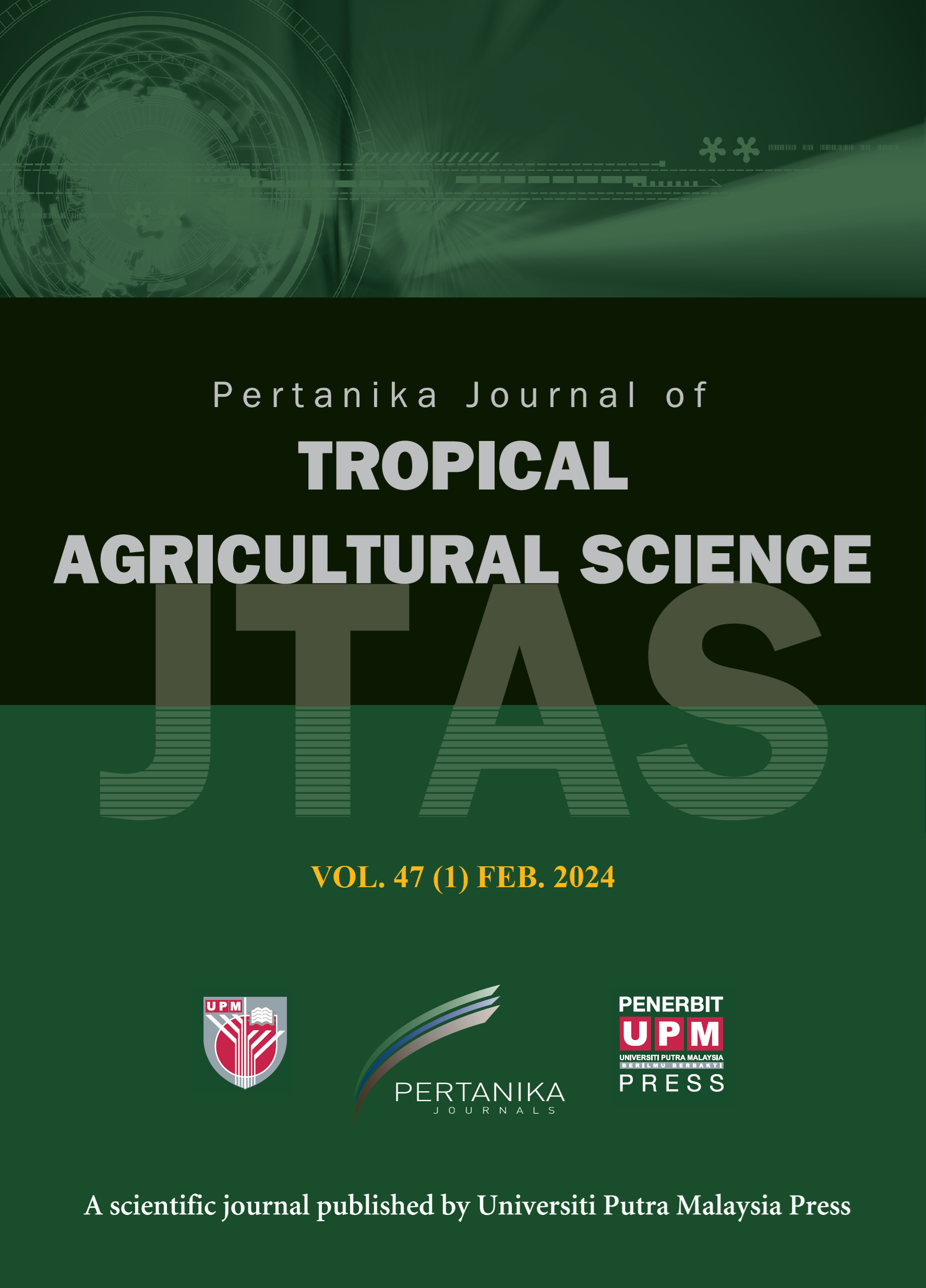PERTANIKA JOURNAL OF TROPICAL AGRICULTURAL SCIENCE
e-ISSN 2231-8542
ISSN 1511-3701
Effect of Lantana camara L. and Parthenium hysterophorus L. to Control Pathogenic Nematode, Meloidogyne incognita (Kofoid and White) Chitwood
Sarker Mohammad Rezaul Karim, Mahmud Mohd and Siti Nur Atiqah Samsi
Pertanika Journal of Tropical Agricultural Science, Volume 42, Issue 1, February 2019
Keywords: Bionematicide, Lantana camara, Meloidogyne incognita, Parthenium hysterophorus, root-knot nematode
Published on: 25 Feb 2019
Lantana camara L. and Parthenium hysterophorus L. are two invasive weed species in Malaysia, but sufficient information is not available on the uses of these invasive species for producing value-added products. Therefore, the plant extracts of these species were tested against the pathogenic nematode, Meloidogyne incognita to explore the possibility of using these species in the industry for commercial production of bionematicide. Aqueous extracts of the weed species were made at the Universiti Malaysia Kelantan (UMK) laboratory by mixing 0 g, 10 g, 20 g, and 40 g dried plant powder with 100 ml distilled water. The plant extracts (6 ml) at four different concentrations, e. g. 0%, 10%, 20% and 40% were added to the nematode suspension containing 50.33±2.52 Juveniles in urine jars, and the contents were kept undisturbed for 24 hours. The number of dead nematodes was counted by placing the treated extracts on the microscopic slide and was observed under a compound microscope. The data revealed that both the species had the killing effect on the nematode. Between two plant species, L. camara was more effective causing 83% mortality at 40% concentration of extracts. P. hysterophorus caused 81.5% mortality of the nematode at the same concentration (40%). The plant species might be the raw materials for producing bionematicide in the industry, and the effective concentration might be reduced by purifying and partitioning the crude extracts with appropriate solvents and techniques.
ISSN 1511-3701
e-ISSN 2231-8542




